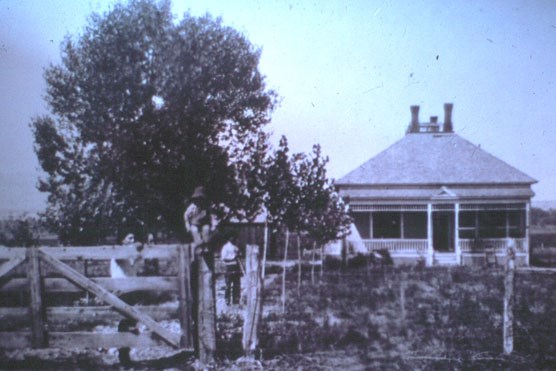
T-L Photo By the time Henry Lovell came to the Bighorn Basin in 1879, he had lived a life filled with adventure. At the age of 14 he left home and headed for the southwest where he led government mail trains on runs from Fort Dodge, Kansas to Mexico City. During this time he acquired three bullet wounds and a knife wound fighting off hostile Indians and outlaws. Not long thereafter he went into the cattle business where he met Kansas City capitalist Anthony Mason. They soon formed a partnership in the ranching business where Lovell provided the expertise and Mason the financial backing. In 1879 and 1880 Lovell trailed his first three herds north. Leaving southern Kansas his operation brought the cattle into the basin, just west of the Bighorn River, further south from where you now stand. In 1882 Lovell’s outfit brought in 12,000 cattle from Oregon. As the herd grew in size Lovell decided to relocate his home ranch in 1884 further north on the property where you now stand, east of the Bighorn River, on Willow Creek. The move was influenced by the land’s proximity to the nearest cattle shipping point on the Northern Pacific Railroad, 95 miles north at Billings, Montana. The open range is a foreign concept in much of the west today. That’s because barbed wire partitions thousands of square miles of range land. This fencing sections even the most gigantic parcels of land into manageable sizes. Yet during the open range era there was no barbed wire, the sage and water were free, allowing vast cattle herds to graze for free on public land. Outfits such as the M-L ranch would partition a small piece of deeded land, such as the one you are now standing on and set it up as their headquarters. From this base, they would graze cattle across the seemingly endless basin. Click Here to read Mason-Lovell Ranch Part Two - A Cruel Winter To The End Of An Era |
Last updated: August 27, 2017
